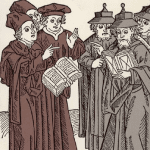The Genesis of the Jewish Community in Kamenets-Podolski
The story of the Jewish community in Kamenets-Podolski, a city in Western Ukraine, is a tale of strength and sorrow that started in the 15th century. By the 17th century, thousands of Jews sought refuge in this city during the brutal period of the Chmielnitsky uprising. As the centuries unfolded, the Jewish community in Kamenets-Podolski became politically active and grew to comprise 40% of the city’s population, amounting to about 16,000 Jews. However, World War I ushered in an era of pogroms and victimization, casting a shadow over the thriving Jewish community.
Escaping to Hungary: The Journey Begins
Between 1939-1941, a tumultuous period of World War II, approximately 10,000-20,000 Jews fled German-occupied regions like Poland, Austria, and Germany, seeking sanctuary in Hungary. As Hungary declared war on the Soviet Union, foreign Jews and those unable to establish Hungarian citizenship were targeted for deportation. Jews were herded into freight cars and transported to the former Soviet Union border, where they were handed over to German forces. Despite the local Jewish community’s best efforts to assist, the sheer volume of arrivals overwhelmed their capacity to help.
The Tragic Fate of the Jewish Community in Kamenets-Podolski
Once delivered to German hands, Jewish families were forced to march from Kolomyja to Kamenets-Podolsk. The darkest chapter in the history of the Jewish community in Kamenets-Podolski began on August 27, 1941. Detachments of Einsatzgruppen and troops commanded by SS General Friedrich Jeckeln initiated mass killings of the Jewish population, marking a tragic end to a once vibrant Jewish presence in the city.
Resources: United States Holocaust Memorial Museum Yad Vashem, Degob, Image Resource











